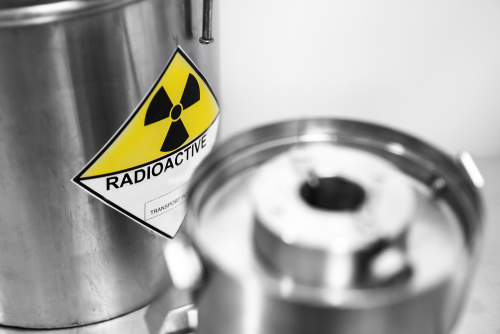In the world of nuclear medicine, precision and safety are non-negotiable—especially when transporting radiopharmaceuticals. Whether it’s technetium-99m, iodine-131, or fluorine-18, these radioactive materials are essential in diagnostics and therapy, yet they come with serious responsibilities.
At Mediray, we understand that choosing the right lead container isn’t just about compliance—it’s about protecting people, patients, and the integrity of every dose you deliver. In this guide, we’ll help you navigate the key considerations to find the perfect lead container for your radiopharmaceutical transport needs.
Why Lead Containers Matter in Radiopharmaceutical Transport
Radiopharmaceuticals emit radiation that can be harmful without proper shielding. Lead, due to its density, is the gold standard for containing radioactive emissions. But not all lead containers are created equal.
The right lead container helps you:
✅ Shield personnel and the environment from radiation
✅ Maintain the stability and quality of the radiopharmaceutical
✅ Meet all local and international transport regulations
✅ Ensure ease and safety of handling and transport
✅ Reflect professionalism and reliability in medical logistics
At Mediray, we design our lead containers to meet the demands of modern-day nuclear medicine. But first—let’s walk through what makes a container the “right one” for you.
Step 1: Know Your Radionuclide
Different isotopes = different shielding needs.
Start by identifying the type of isotope you’ll be transporting, along with its energy level and activity. Here’s a quick guide:
| Isotope | Common Use | Shielding Requirement |
| Tc-99m | Imaging | Low (3–6 mm lead) |
| I-131 | Therapy | Moderate (10–25 mm) |
| F-18 (PET) | PET Imaging | High (up to 50 mm) |
| Ga-68 | PET Imaging | Moderate to High |
Mediray offers containers specifically engineered to handle each of these radionuclides, with custom shielding thicknesses and design variations to match your specific needs.
Step 2: Match Shielding Thickness to Radiation Strength
Don’t guess—calculate. Shielding effectiveness is critical to ensure safe transport. If shielding is too thin, radiation exposure may exceed legal limits. If it’s too thick, your container becomes unnecessarily heavy and hard to handle.
A general guideline:
- 3–6 mm: Tc-99m, Cr-51
- 10–15 mm: I-131, In-111
- 25–50 mm: F-18, Ga-68, therapeutic isotopes with high-energy gamma emissions
Mediray Tip: All our containers undergo rigorous attenuation testing to ensure regulatory compliance and optimal shielding.
Step 3: Prioritize User-Friendly Design
It’s not just about shielding, it’s about how the container performs in the real world.
When evaluating a lead container, consider:
Safety First
- Secure locking systems to prevent accidental opening
- Leak-proof design to avoid contamination
- Shock-absorbent casing for transport-related impacts
Ergonomic Handling
- Integrated handles, straps, or wheeled cases
- Lightweight composite casing without compromising shielding
- Stackable and space-saving shapes for fleet transport
Easy Maintenance
- Smooth, sealed interior for quick decontamination
- Resistant to corrosion or moisture over time
At Mediray, our engineers work closely with nuclear medicine professionals to ensure every product is safe, efficient, and intuitive to use.
Step 4: Consider Your Mode of Transport
Where and how you transport matters.
Land Transport
- Compact containers are ideal for in-hospital use or regional couriers
- Mediray’s modular vial shields are perfect for short-distance diagnostics
Air Transport
- Must meet IATA and ICAO Dangerous Goods Regulations
- Choose certified Type A containers for high-activity shipments
- Mediray offers UN-rated and leak-tested containers for secure, air-safe delivery
Third-Party Couriers
- Opt for tamper-evident seals and GPS-trackable enclosures
- Mediray’s transport cases are courier-compliant and optimized for third-party handoffs
Step 5: Regulatory Compliance Is a Must
Radiopharmaceutical transport is one of the most highly regulated medical logistics processes. Your lead container must comply with:
- IAEA SSR-6 standards
- DOT (U.S. Department of Transportation) guidelines
- NRC (Nuclear Regulatory Commission) requirements
- Local radiation safety authority rules
Mediray containers are:
- Type A certified
- UN-2915 compliant
- Backed by comprehensive documentation and testing certificates
Need help with compliance? Our in-house experts can assist with paperwork and approval processes.
Step 6: Reusability vs. Single-Use
Which container type is right for your workflow?
Reusable Containers
- Durable, long-term solution
- Ideal for facilities with daily radiopharmaceutical use
- Requires regular cleaning and periodic testing
Single-Use or Disposable Shields
- Great for one-time transfers or small clinics
- No need for decontamination
- Lower upfront cost but adds up with high-frequency usage
Mediray offers both options—with customized branding available on reusable container exteriors for an added touch of professionalism.
Step 7: Partner With a Trusted Supplier
Choosing the right container is only half the equation—choosing the right partner is the other.
Mediray is proud to be USA trusted radiopharmaceutical logistics solutions provider, offering:
- 100% locally supported product warranties
- Custom-designed shielding solutions
- Dedicated support team for clinical and research facilities
- Next-day delivery options across major cities
We don’t just sell containers we help you build safer, more efficient workflows in nuclear medicine.
Real-World Application: Mediray in Action
A major metropolitan hospital recently switched to Mediray’s modular lead shielding system for their PET radiopharmaceutical deliveries. The result?
✅ 25% reduction in transport time
✅ 40% less radiation exposure to handlers
✅ Seamless integration with air and road couriers
✅ Full compliance with national radiation safety laws
That’s the Mediray difference: combining science, safety, and smart logistics in every product we deliver.
Final Word: Lead Containers Are More Than Metal
Choosing a lead container for radiopharmaceutical transport isn’t just a technical decision—it’s a decision about protecting people, ensuring treatment continuity, and maintaining public trust in nuclear medicine.
At Mediray, our commitment is to support your mission—delivering life-saving care with safety, confidence, and compliance.
Whether you’re outfitting a new facility or upgrading your transport systems, we’re here to help.
Ready to Upgrade Your Radiopharma Transport?
Let’s talk about the right lead container for your needs.
Mediray – Empowering safer journeys for every dose, every time.



